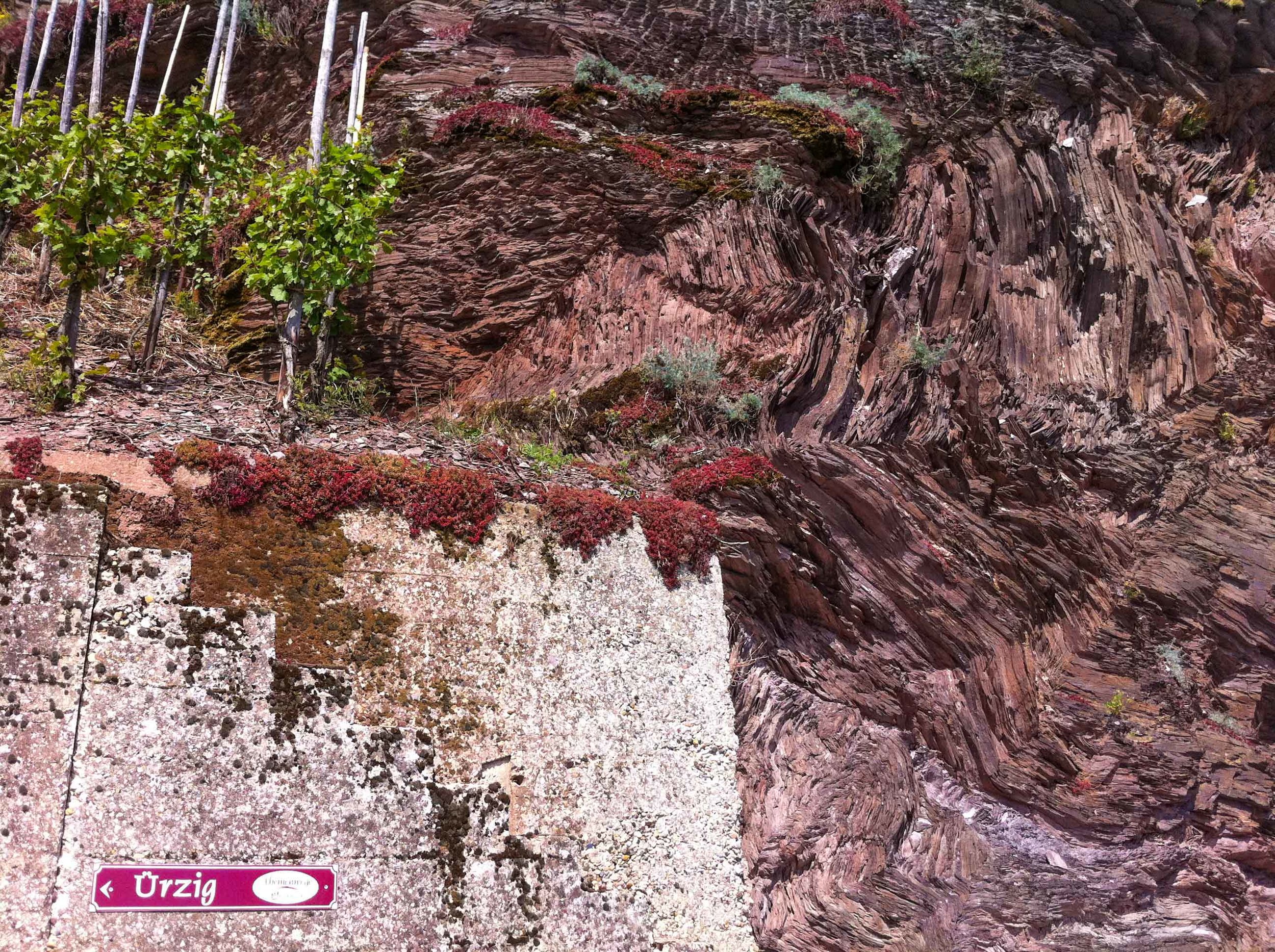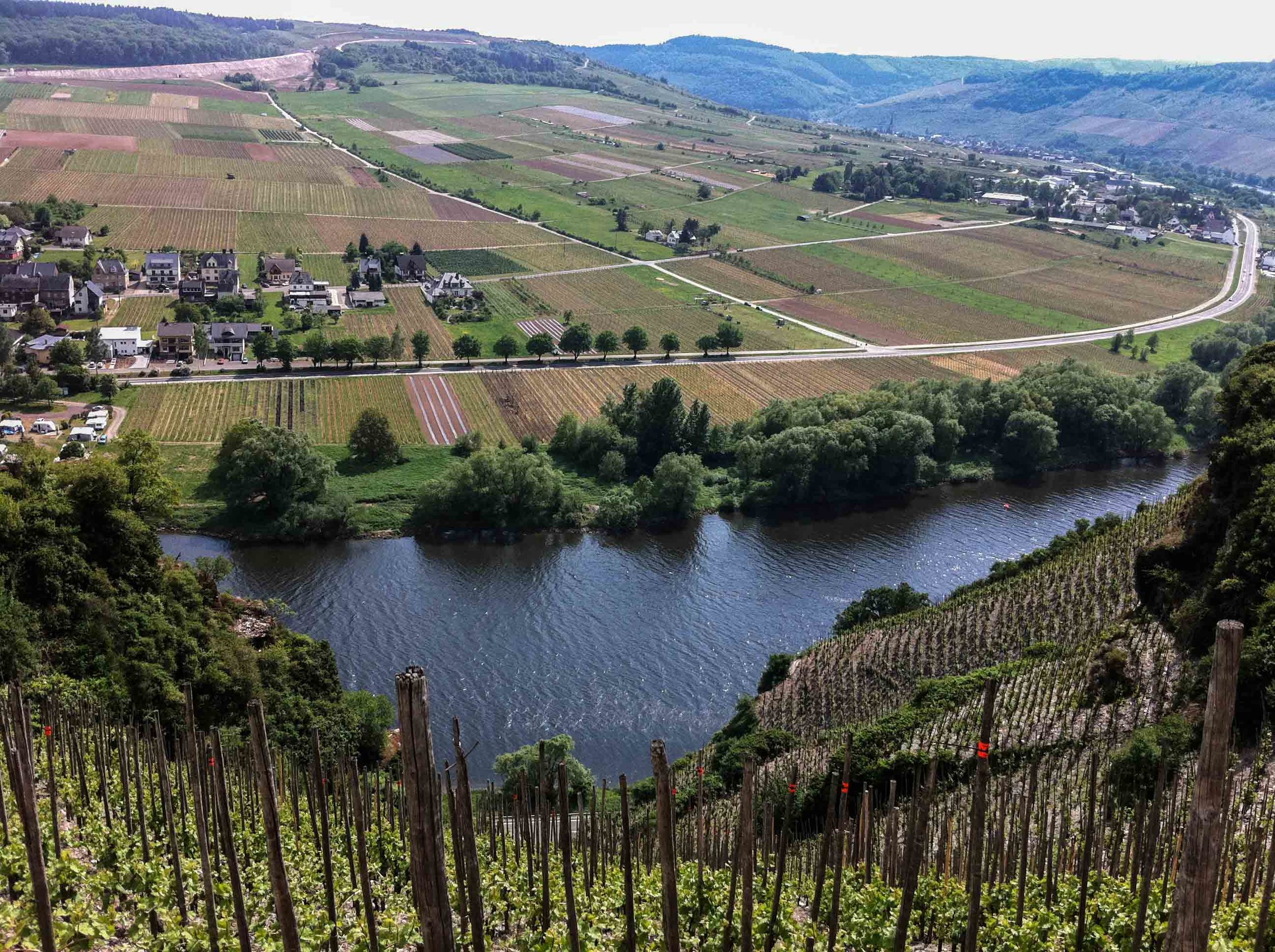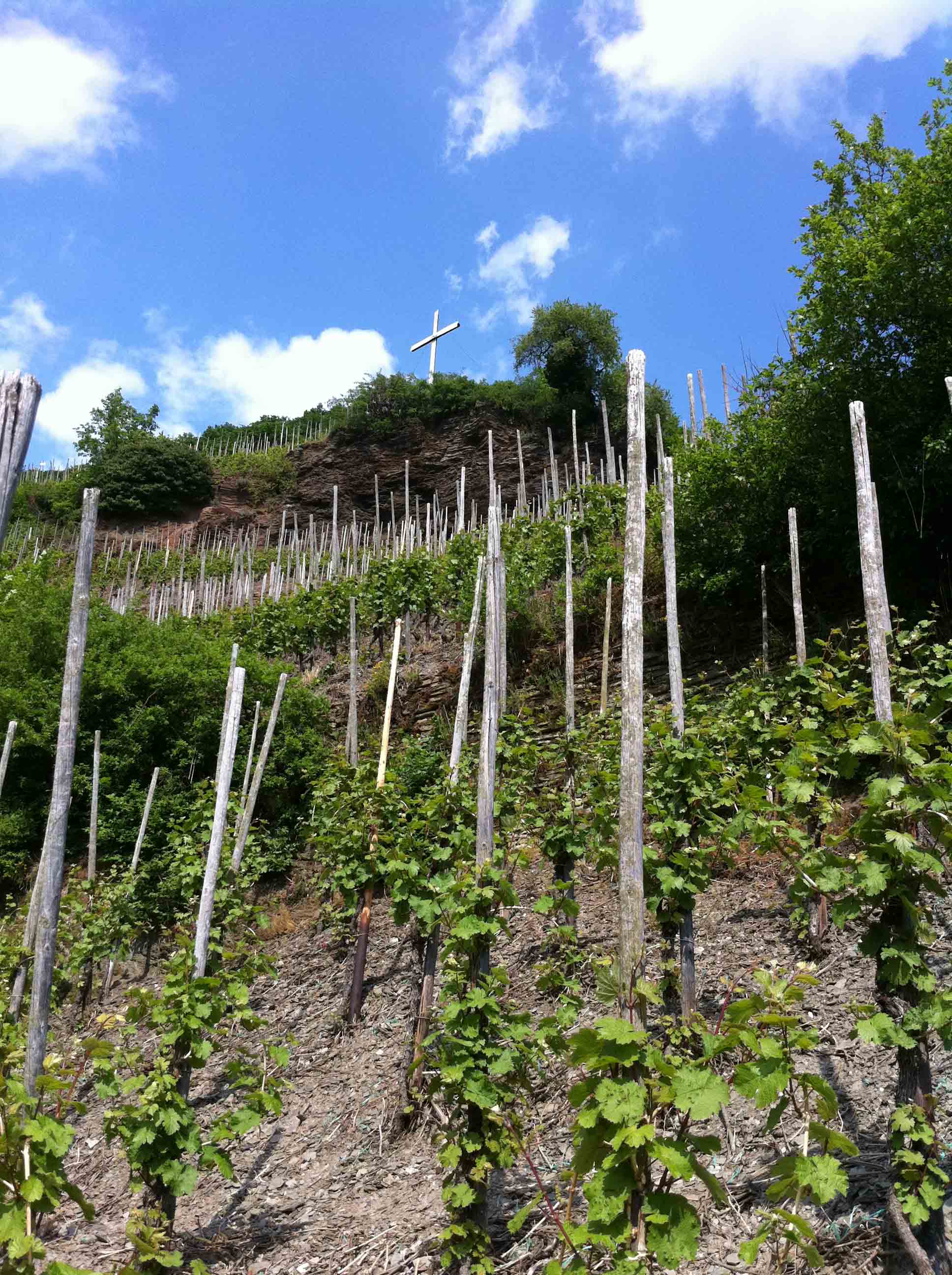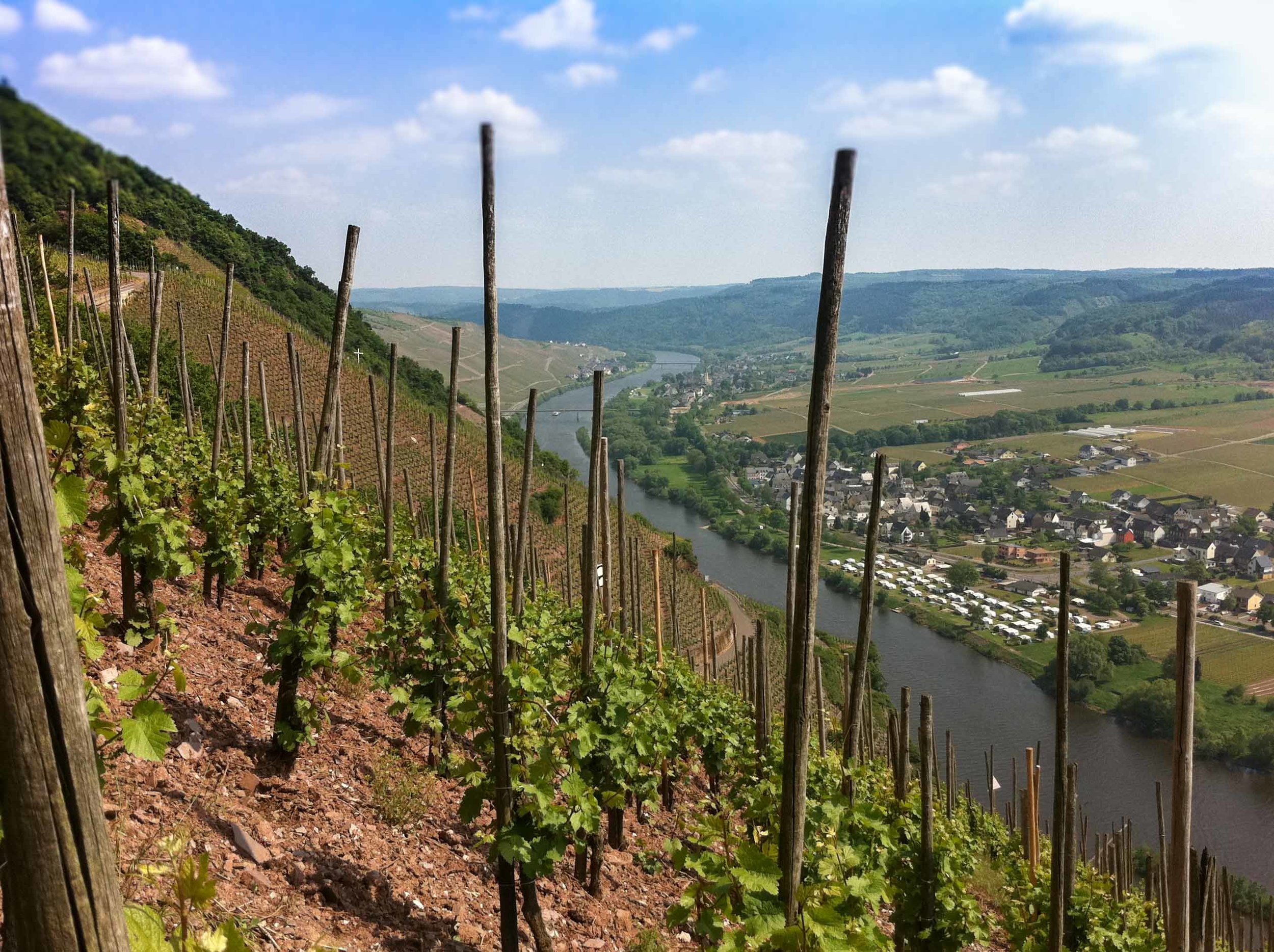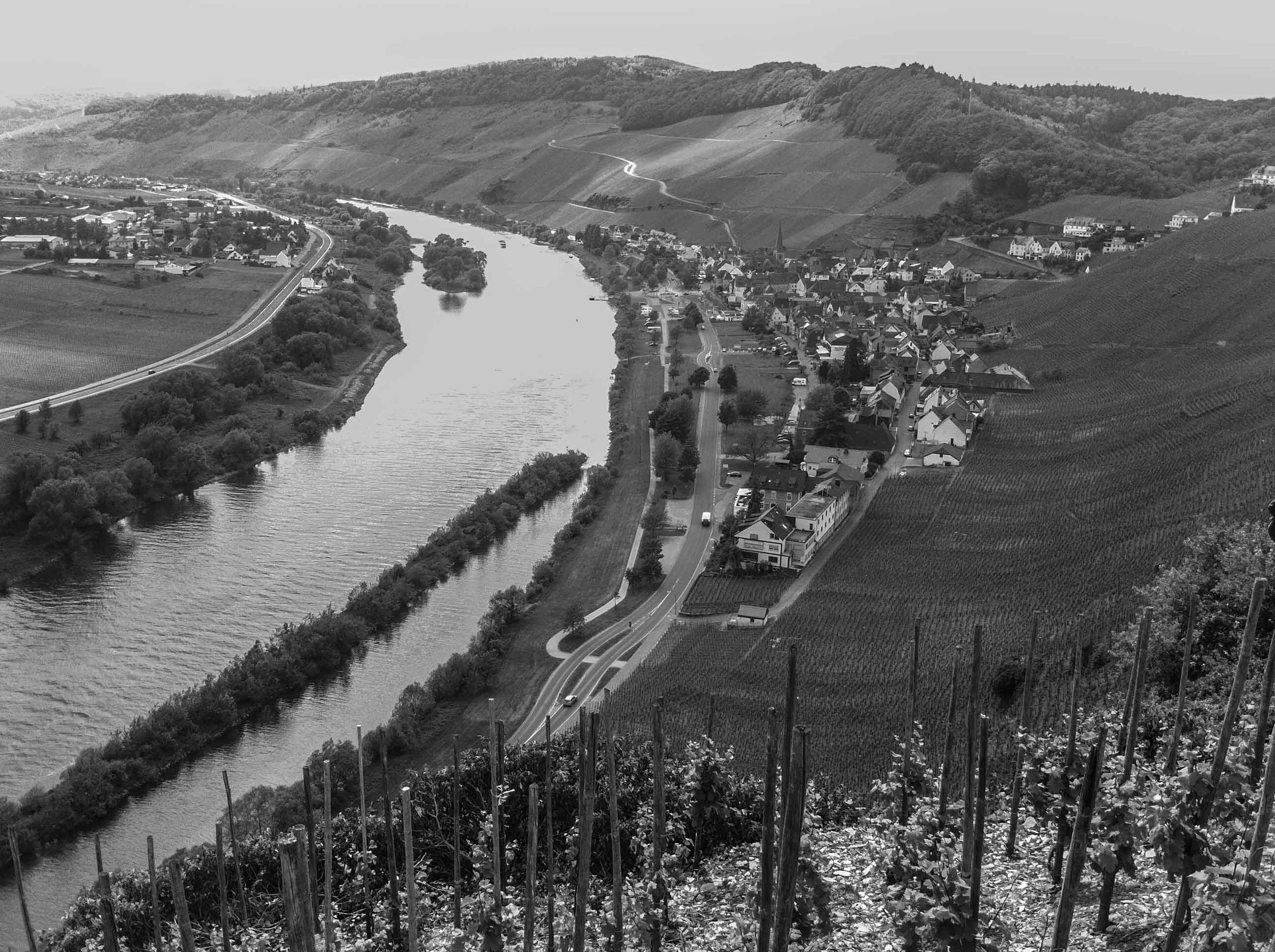
Germany
Mosel
Volcanism in Germany is a complex tale of rift zones, trenches, and hot spots, spanning some 400 million years. There are five main areas that touch wine-growing regions: The Eifel Volcanic Field (Ahr and Mittelrhein), The Wittlischer Senke (Mosel) and Saar-Nahe Senke (Nahe and Rheinhessen), the Upper Rhine Graben (Pfalz) and the Kaiserstuhl Volcanic Complex (Baden). Although relatively close in space, millions of years separate the geological activity that gave rise to the volcanic bedrock found in each area, running the full technicolour range from basalts to porphyry, trachyte and rhyolites.
Volcanics in the Mosel are among Germany’s oldest, nearly 300 million years old infact. The meandering Mosel River loops northward at the village of Ürzig into the Wittlischer Senke, a shallow depression, like a trough on the earth’s surface named after the village of Wittlisch. The trough marks where the earth was pulled apart along a fault, causing a section of crust to sink. Fissures along the edges allowed underlying magma to spill out onto the surface forming silica rich lavas, rhyolites, tuff, and ignimbrite.
Ürzig is the only Mosel wine-growing village on the rift line, and the spectacular amphitheatre-shaped, ludicrously steep Würzgarten is the only vineyard where volcanic flow mixes with older Devonian slate and sandstone to form blazing red, iron-rich soils. The Ürziger Würzgarten (spice garden of Ürzig) is a ‘‘grosses gewächs’’; planted only to ungrafted Riesling, distinguished from other Mosel Riesling by its typically deeper colour and exotic flavours of mango, peach/apricot, honey, smoke, and spice.
Adapated from Volcanic Wines, Salt, Grit and Power


